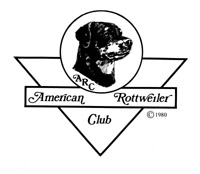Introduction
Osteosarcoma (OSA) is the most common primary bone tumor in dogs, especially prevalent in large breeds such as Rottweilers. This aggressive cancer significantly impacts life expectancy and quality of life, making effective treatment options critical. Traditional treatment methods, though widely used, come with various complications and often limited success, necessitating the exploration of innovative therapies such as histotripsy.
Understanding Osteosarcoma in Rottweilers
Large and giant breeds like Rottweilers are genetically predisposed to osteosarcoma, which involves painful limb tumors often leading to aggressive treatments like limb amputation or intensive chemotherapy. Despite these efforts, the median survival time remains approximately 10-12 months after diagnosis, underscoring the urgent need for better treatments.
Current Treatment Challenges
The standard treatments—limb amputation and chemotherapy—are not only traumatic for both pets and their owners but also come with high rates of complications. Moreover, not all dogs are candidates for these invasive procedures, limiting their applicability and effectiveness in managing the disease.
The Promise of Histotripsy
Histotripsy, a non-thermal focused ultrasound technique, presents a non-invasive alternative that mechanically disintegrates tumor tissues. This method not only targets the primary tumor without surgery but also stimulates the immune system to potentially combat metastatic disease, offering a dual approach to treatment. Early research funded by the AKC Canine Health Foundation and conducted at the Virginia-Maryland College of Veterinary Medicine has shown that histotripsy can effectively target and disintegrate bone tumor tissue without damaging surrounding areas, providing a promising new direction in canine osteosarcoma treatment (AKC Canine Health Foundation) (AKC Canine Health Foundation) (AKC Canine Health Foundation).
Research and Future Directions
Current studies focus on the in-vitro effects of histotripsy on immune responses in canine cells, with ongoing clinical trials evaluating its efficacy and safety in living subjects. These studies aim to establish optimal protocols for using histotripsy as a standalone treatment or in conjunction with other therapies to maximize its effectiveness against both primary tumors and metastatic disease (AKC Canine Health Foundation) (AKC Canine Health Foundation).
Conclusion
Histotripsy represents a significant advancement in the treatment of canine osteosarcoma, particularly for breeds like Rottweilers that are highly susceptible to this devastating disease. By offering a non-surgical option that also potentially enhances the immune response against cancer, histotripsy could drastically improve survival rates and quality of life for affected dogs. Further research and clinical trials will help determine the full potential of this exciting new therapy as part of the broader effort to combat canine cancer.
For more detailed information on histotripsy research and its impact on canine health, visit the AKC Canine Health Foundation’s dedicated page for information on this grant open from March 1, 2022 – February 29, 2024.




